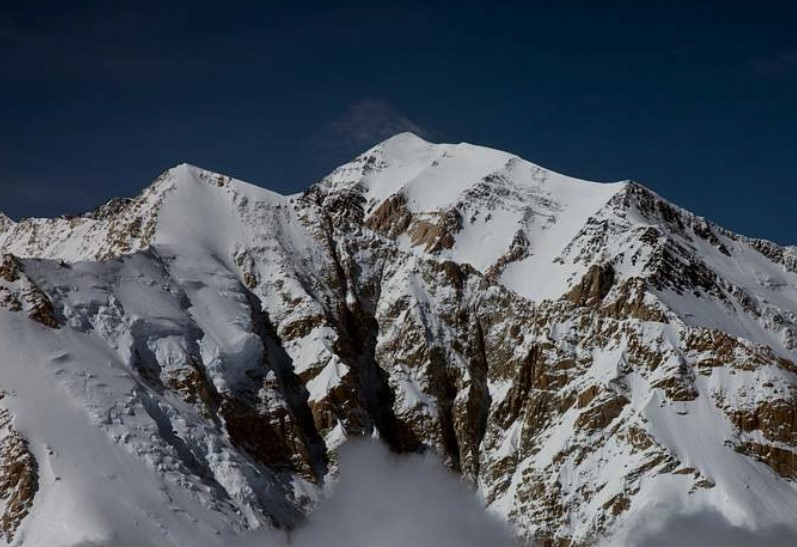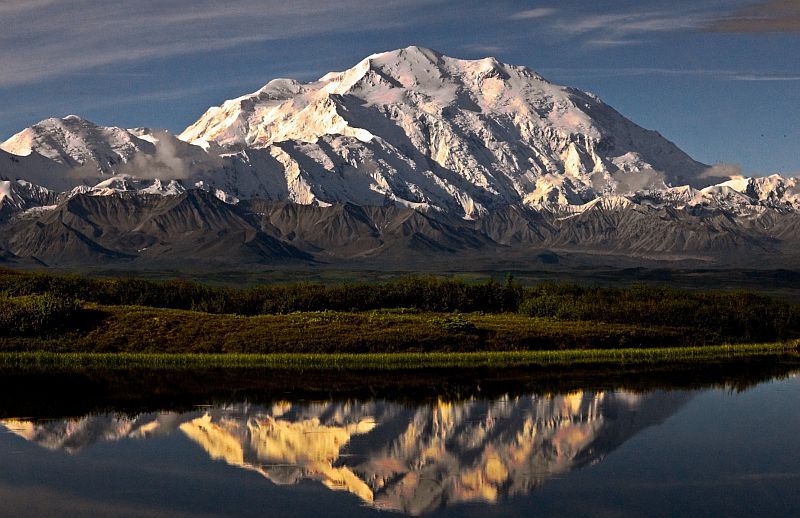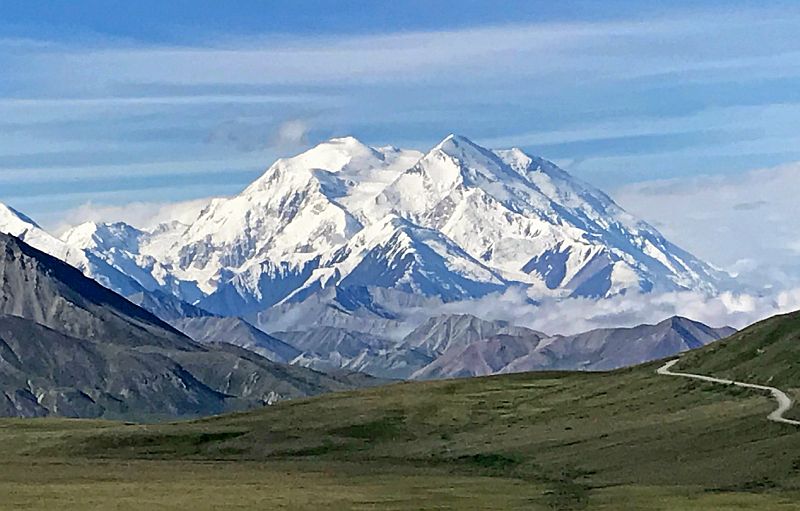Denali (Mount McKinley), named after assassinated U.S. president William McKinley in 1897, is one of the most impressive mountains in the world. Efforts in the 20th century to officially rename the peak Denali, the native Alaskan name, have been unsuccessful, yet most people still refer to the mountain by its traditional name, pronounced duh NAH lee. After Aconcagua and Mount Everest, Denali is the third most isolated and well-known summit on Earth.
As the highest peak in North America, towering almost from sea level to 20,310 feet (6,190 meters), Denali has been called ‘America’s rival to Everest.” The mountain is regarded as the largest continental mountain in the world, with an impressive 3.5-mile (5.6 km) vertical rise. Standing at 18,000 feet (5,500 meters) above sea level, it is the highest mountain on the globe and the highest point on Earth north of 43°N.
Denali features two notable summits: the South Summit, which is higher, and the North Summit, which is lower. The roughly equivalent peaks that surround Denali are part of a larger range that is thought to be the largest massif in the world. The Alaska Range where Denali dominates also contains massive snowy summits that would dwarf the Colorado Rockies, but they appear no more than foothills beside Denali’s majestic bulk. For ages, the Koyukon people who live in the area around the mountain frequently referred to the summit as “Denali.”
Denali Mountain, a granitic pluton largely formed of pink quartz monzonite, was raised by tectonic pressure from the Pacific Plate subduction underneath the North American Plate. At the same time, erosion eroded away the sedimentary material surrounding and above the mountain. Winter temperatures can plunge to below 75°F (50°C), and midsummer temperatures on the mountain regularly fall below zero. Denali is such a huge mountain that it creates its weather around the upper elevations. The air in Alaska is thin yet incredibly clear in between storms; you can see the mountain’s details from a distance, and Denali can be seen over a hundred miles away from Fairbanks.
The frequently cloud-covered peak appears in stark contrast to the blue-sky ice; Denali is the tallest, as are its glacier-clad slopes. The perpetual mountain in North America. Snow is deep atop the mountain, occasionally hundreds of feet thick in some places. As they slowly descend the mountain’s sides, glaciers chisel away at deep, trough-like canyons, filling them with ice.

The Muldrow Glacier, a virtual river of ice that stretches from the northern flank of Mount McKinley to within a mile of the park road, is the longest glacier in Denali National Park. It is 35 miles (56 km) long. Each year, the Alaska Range slowly grows taller as the southern edge of the Denali fault line continues to thrust itself upward, overriding the northern plate and pushing the valley floor ever downward. Wild moose, caribou, Dall sheep, and grizzly bears wander the slopes of this massive mountain.
Denali is the highest mountain in North America, rising above glistening rivers of ice. With its base nearly at sea level and its summit rising over 20,000 feet (6,000 meters), Denali features the earth’s steepest vertical relief. The mountain is shrouded in Native American mythology. James Wickersham documented the first unsuccessful attempt to climb Denali in 1903; Frederick Cook claimed the first ascent in 1906, although this ascent is unconfirmed and its validity is called into question. However, the professional climbers Hudson Stuck, Harry Karstens, Walter Harper, and Robert Tatum reached Denali’s top on June 7, 1913, making it the first verified ascent to the South Top.

Native Americans who live in Denali’s long shadow claim the mountain is charged with powerful spiritual energy, and the nearby Alaskan tribes of Tena and Koyukon hold Denali in the highest regard for sacredness. The Athapaskan Indians of Interior Alaska named the mountain Denali, meaning “The High One” or “The Great One.” In other regions of the state, it had different names: Doleyka, Traleika, Bulshia, Gora, and Tenada. New Age adherents attribute the power of Denali to its location at a major global grid intersection. In the tradition of the Great White Brotherhood, New Agers similarly perceive the mountain as a reception point on the earth grid, anchoring and transmitting cosmic energies related to the spiritual evolution of humankind.
The Tena people orally passed down from generation to generation an ancient tale of Denali’s creation. The legend spoke of “the world before,” the earth as we know it today, which ultimately resulted in the manifestation of our physical world and the beginning of human procreation. Yako was a gentle demigod who dwelt in isolation with the animal spirits in eastern Alaska, according to the Tena creation myth.
Ses, the giant brown bear, told Yako that the Raven War chief Totson lived far to the west and that Yako’s hamlet had lovely ladies of his kind. Risking the wrath of the war chief, Yako locates the village and sings a song to attract a mate. A young girl is given to him, but Totson is jealous of his song and intimidates Yako, who must escape quickly in his canoe. Totson chases Yako, hurling arrows and spears at the fleeing couple without success.
Finally, Totson throws his special magical spear, but Yako matches his magical wit, creating the tidal wave of stone that is Denali to block the spear. The magic spear is deflected off Denali into the heavens while Totson’s warship crashes into the rocks, and Totson is transformed back into a raven after the fight. Yako collapses and sleeps for a while. When he wakes up, the girl has grown into a stunning woman.
Being the first pair to reproduce and give birth to the Tena people, the two start a relationship akin to that of Adam and Eve. Their children, taught by their parents to live in peace, justice, and plenty, would, in future generations, migrate far to the east and south of North America. It is noteworthy to note that the Navajo and Apache languages, together with their common shamanic traditions and their parable stories, have comparable linguistic roots to those of the Tena.
